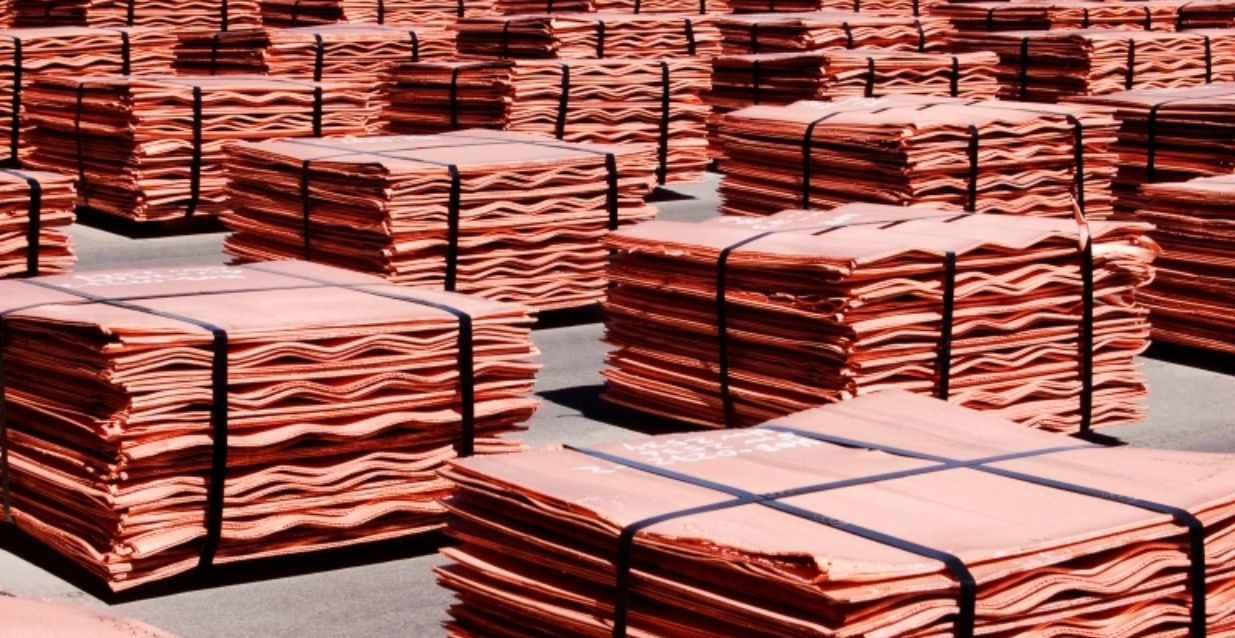What is Copper Cathode?

Copper, after iron and aluminum, is one of the most widely used metals in the world. The chemical symbol for this element is Cu, and it has a reddish-orange color. One of the notable characteristics of copper is its high thermal and electrical conductivity, which has made it an essential material in various industries. Pure copper is rarely found on the Earth’s surface and is usually combined with other substances. Copper ore primarily contains iron, copper, and sulfur, commonly referred to as chalcopyrite.
Once extracted from open-pit or underground mines, copper ore is transported to processing plants, where high-temperature furnaces facilitate the reaction of oxygen with the iron in the ore, producing iron oxide, sulfur dioxide, and copper sulfide. Through continued heating, the sulfur in the copper sulfide reacts with oxygen to produce sulfur dioxide and 99% pure copper. This copper, with its 99% purity, does not have the high thermal and electrical conductivity required for certain industries. To meet these demands, a highly pure form of copper, known as copper cathode, is used. Copper cathode is a type of copper with 99.99% purity. Its high purity, durability, flexibility, and excellent thermal and electrical conductivity make it a crucial raw material in various industries. In this article, Raeis Industrial Group introduces copper cathode, its production processes, and its applications across diverse industries.
Copper Cathode Production Process
For centuries, copper has been a valuable and widely utilized raw material. Historically, pure copper was often extracted. However, as open-pit and underground mining expanded over time, the number of natural copper sources has decreased, while demand has risen. Consequently, modern copper cathode production relies on more precise methods and tools. Below, Raeis Industrial Group provides a brief overview of various copper cathode production processes:
Pyrometallurgical Process: Given that most copper ores worldwide are sulfide-based, one of the challenges in producing copper cathodes is the lack of suitable solvents for processing sulfide ores. Thus, copper is predominantly produced using pyrometallurgical methods, which are specifically designed for sulfide ores. Ore Preparation: After mining, the ore is crushed using primary and secondary crushers. Grinding and Mixing: The ore is ground in ball mills and mixed with chemical reagents and lime slurry to form a pulp. Flotation Process: The pulp is enriched through flotation to produce high-grade copper and molybdenum concentrates. Smelting: The high-purity concentrate undergoes pyrometallurgical treatment to produce copper matte, which is refined into anode copper. Electrorefining: Finally, the anode copper is subjected to electrorefining and electrolysis, yielding 99.99% pure copper cathodes.
Hydrometallurgical Process: This process, also known as bioleaching or electrowinning, is often employed for oxidized copper ores. Leaching: Copper ore is immersed in chemical solutions, such as sulfuric acid, to dissolve copper and separate it from other components. Purification: The copper solution is purified. Electrowinning: Copper is deposited on cathodes through an electrolytic process, forming sheets or rods of copper cathode.
Casting Process: This method is used for high-volume production. Copper concentrate is melted in furnaces, and impurities are removed through thermal refining. The molten copper is then cast into cathodes. The diverse production methods for copper cathode underscore its value and importance. With its numerous benefits, including high thermal conductivity, excellent electrical conductivity, corrosion resistance, and malleability, copper cathode is widely used in various industries, as detailed below by Raeis Industrial Group.
Applications of Copper Cathode
Due to its 99.99% purity, copper cathode is one of the most significant raw materials for manufacturing copper products with high electrical and thermal conductivity. Key applications include: Electrochemical industries, Construction, Automotive, Jewelry-making, Electronics, Electrical cables, Copper cookware, Scientific equipment, Copper alloys. Given its exceptional properties, the applications of copper cathode are vast and could fill several articles. This article by Raeis Industrial Group highlights only some of the product’s critical features.
Final Thoughts
Copper cathode is one of the most important and widely used products derived from copper. Pure, high-grade copper is rarely found naturally. Therefore, various processes, depending on the type of mined ore, are used to produce copper cathodes. This article by Raeis Industrial Group reviewed the pyrometallurgical, hydrometallurgical, and casting methods. With 99.99% purity and excellent thermal conductivity, electrical conductivity, and corrosion resistance, copper cathode is a vital material in industries such as electrochemistry, construction, cable manufacturing, automotive, and scientific equipment production.

